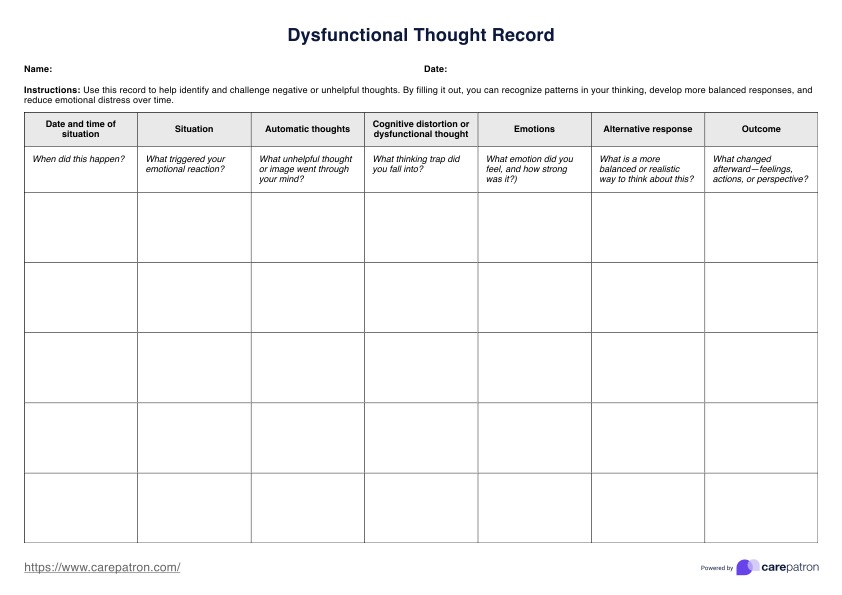Negative thinking can lead to low self-esteem, increased stress, and emotional distress. It often reinforces negative automatic thoughts, which can become habitual and influence how we react to everyday situations.

Dysfunctional Thought Record
Get our Dysfunctional Thought Record to help clients challenge and replace distorted thinking patterns. Download an example and free PDF template.
Dysfunctional Thought Record Template
Commonly asked questions
To make negative automatic thoughts visible, try writing them down as soon as they arise. This helps bring them into awareness, making it easier to challenge and reframe them using tools from cognitive behavioral approaches.
Cognitive therapy helps clients identify distorted thinking patterns, and cognitive restructuring is the method used to replace these patterns with more balanced thoughts. This process supports in effecting belief change over time.
EHR and practice management software
Get started for free
*No credit card required
Free
$0/usd
Unlimited clients
Telehealth
1GB of storage
Client portal text
Automated billing and online payments











